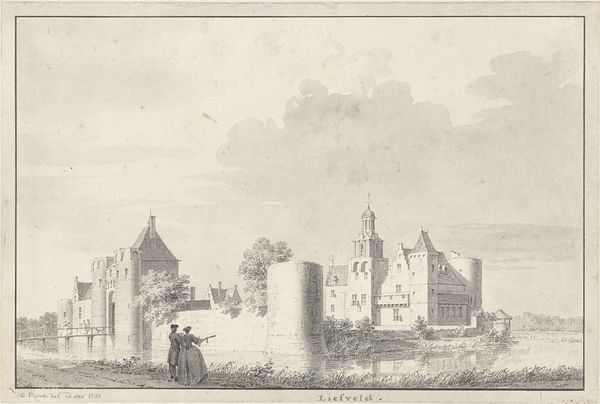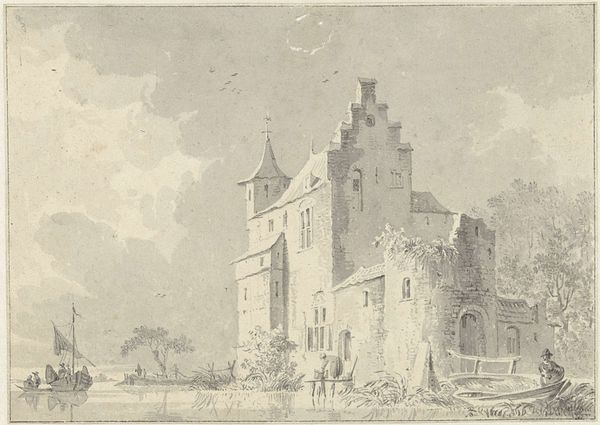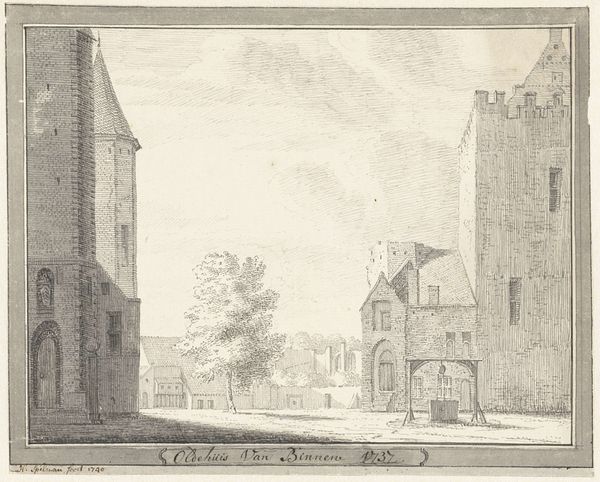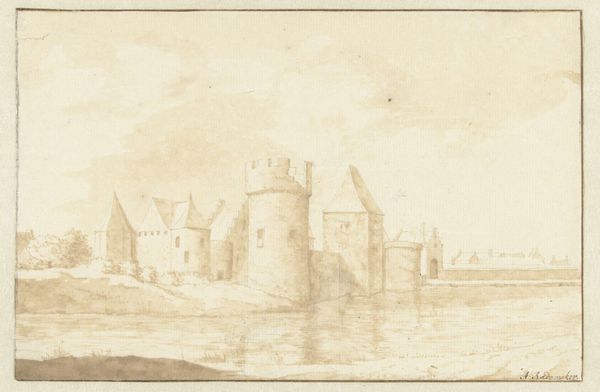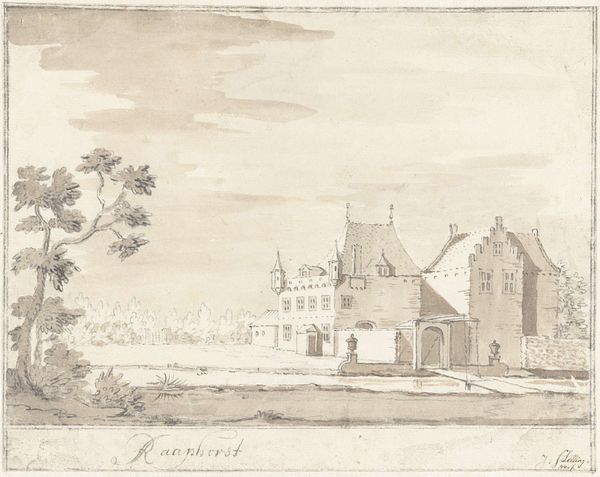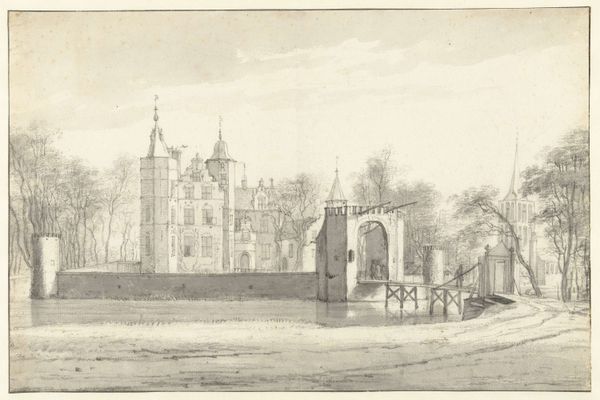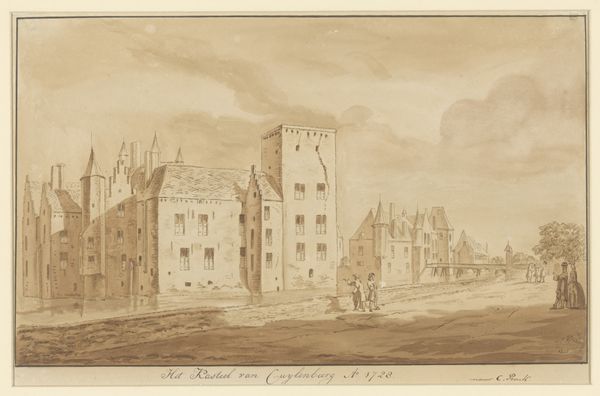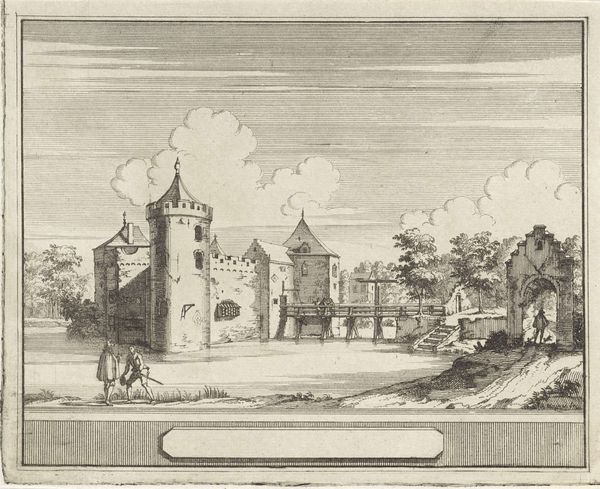
painting, watercolor, architecture
#
baroque
#
dutch-golden-age
#
painting
#
landscape
#
watercolor
#
cityscape
#
watercolour illustration
#
architecture
#
realism
Dimensions: height 329 mm, width 503 mm
Copyright: Rijks Museum: Open Domain
Editor: So, this is Roelant Roghman's "View of Huis Beverweerd, Seen from the North-east," a watercolor from around 1646-1647. It's interesting how such a seemingly simple landscape of a Dutch estate evokes this quiet sense of power. What do you see in this piece? Curator: It's interesting that you pick up on that quiet power. For me, this seemingly straightforward landscape is deeply embedded in the political and social landscape of the Dutch Golden Age. Think about the economic power being consolidated during this time – the rise of a merchant class and the complex histories tied to Dutch colonialism. This estate, likely owned by a member of that class, represents that shift in power. Roghman's choice to depict it with such precise detail subtly reinforces that sense of established authority. What do you think about the relationship between ownership and representation? Editor: That makes sense. It hadn’t occurred to me to consider ownership as a factor in what I perceived as its quiet power. It’s interesting how this one image becomes a stand-in for the whole system. The perfectly regimented landscaping in the foreground drives that point home. Curator: Exactly! And those neat lines speak to a certain worldview, a desire for order and control perhaps? Consider, too, who had access to commissioning art during this period. How might Roghman's own position as an artist influence what he chose to emphasize, and perhaps what he chose to omit? Editor: It really shifts my understanding. I was only focusing on the aesthetic qualities of the work. Thinking about who benefited from its creation makes me rethink the way landscapes operate. Curator: Precisely! It prompts us to question the narratives embedded within seemingly neutral depictions and examine how class, power, and social status get subtly woven into art. Editor: That’s a valuable takeaway. I'll definitely approach landscape art with a more critical perspective now, considering the power dynamics at play. Curator: Agreed. Hopefully this view of Huis Beverweerd, has allowed you a perspective to interrogate assumptions about identity, gender, race, and politics, when looking at art from different eras and contexts.
Comments
No comments
Be the first to comment and join the conversation on the ultimate creative platform.

